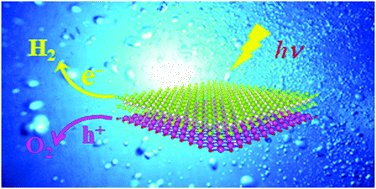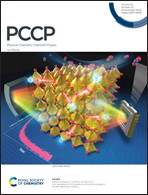Two-dimensional van der Waals heterostructure CdO/PtSe2: promising visible light photocatalyst for overall water splitting†
Abstract
Due to the gradual depletion of fossil fuels and the serious environmental pollution, hydrogen generation by photocatalytic water splitting has been considered as an alternative strategy for clean energy. Herein, using hybrid density functional calculations, we systematically study the structural, electronic and optical properties of van der Waals heterostructure CdO/PtSe2 with different stacking patterns. The heterostructure is found to be dynamically stable, and has type-II band alignment with a large built-in electric field, which is favorable for the efficient spatial separation of photogenerated charge carriers. By revealing the intrinsic interface dipoles dependent photocatalytic mechanisms, we find the band edges of all patterns straddle the water redox levels despite the AB-1 pattern having a bandgap less than 1.23 eV. Moreover, the heterostructure shows globally improved optical absorptions with a large absorption coefficient (105 cm−1) compared to the single layers, demonstrating the enhanced photocatalytic activity. Comparing with widely discussed bilayer systems like graphene/C3N4 and MoS2/C3N4, the CdO/PtSe2 simultaneously has several advantages or peculiarities such as the more favorable absorption of visible light, therefore CdO/PtSe2 is a promising candidate and a unique system for photocatalytic water splitting.



 Please wait while we load your content...
Please wait while we load your content...